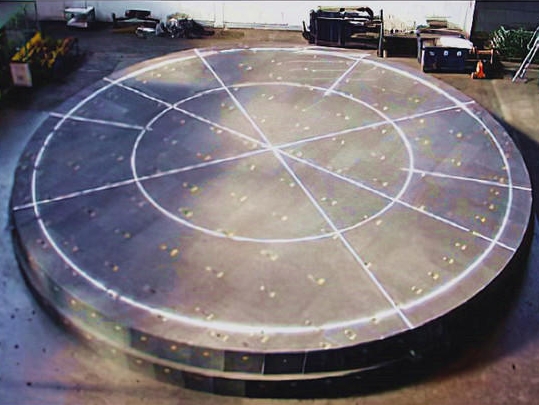- 21
- Nov
The construction process of the foundation heat-resistant concrete, the new hot blast stove plan technical disclosure~
The construction process of the foundation heat-resistant concrete, the new hot blast stove plan technical disclosure~

The basic concrete plan process of the blast furnace hot blast stove is collected and sorted by the refractory brick manufacturer.
1. The construction process of the basic formwork of the hot blast stove:
(1) Use composite steel formwork to support, and wood molds can be used to fill the edge positions.
(2) The contact surface between the heat-resistant concrete and the formwork should be coated with an isolation layer.
(3) The joints between the templates should be sealed, and slurry leakage is strictly prohibited.
(4) After the template support is completed, check whether the size, elevation, and support position of the template are accurate, confirm whether the stiffness and stability of the support system meet the design requirements, and then clean up the impurities in the template.
(5) After the template is qualified, the following measures should be taken to ensure the stability of the basic template due to the large volume of the hot blast stove:
1) The foundation should be supported with three layers of angle steel to support the cooling pipe, formwork and steel bars, and angle steel with the same height as the thickness of the foundation should be supported around the foundation to strengthen the formwork.
2) Bolts and angle steel connections set around the foundation are used to reinforce the foundation formwork.
3) The tension bolts set on the independent foundation and the foundation short columns are also used to reinforce the foundation formwork.
2. Foundation heat-resistant concrete cushion:
(1) Before the construction of the concrete cushion, the foundation should be leveled, and the surface of the foundation should be cleaned after leveling.
(2) Pull line: release the construction auxiliary line of the concrete cushion and mark it clearly.
(3) The preparation of concrete: Strictly follow the raw material ratio and the amount of water added in the concrete construction manual to mix evenly.
(4) Before the concrete is mixed, steel drills should be placed on the foundation to control its thickness. The side mould of the concrete cushion layer shall be fixed with steel drills. During the pouring process, a vibrator shall be constructed to vibrate densely, and finally a wood trowel shall be used to level the surface of the cushion layer. deal with.
3. Heat-resistant concrete construction of hot blast stove foundation:
The construction of heat-resistant concrete should be completed as much as possible at one time, vibrating and compacting while pouring, and no expansion joints are reserved.
(1) The construction and pouring of concrete should be carried out in layers, each with a thickness of 300mm, and the concrete of the lower layer should be poured before the initial setting of the upper layer.
(2) The concrete should be vibrated and compacted until the surface stops obvious sinking, bubbling and flooding.
(3) During the concrete construction process, check the template, steel bars, reserved holes, embedded parts and inserts for displacement, deformation or blockage at any time, and make adjustments and treatments, and they must be repaired before the concrete layer sets complete.
(4) After the construction of the concrete layer is completed and confirmed to be qualified, the maintenance will begin. Repeated watering and covering and curing should be carried out within 12 hours. During the process, sufficient moisture of the concrete layer should be ensured. The curing time should be no less than 7 full days. During the curing period, the surface temperature of the concrete shall be inspected and recorded regularly.
4. Cooling measures for heat-resistant concrete:
Due to the large volume of heat-resistant concrete layer of the hot blast stove foundation, in order to avoid the occurrence of temperature cracks, measures to lower the temperature should be adopted:
(1) When preparing concrete, add slag Portland cement and basalt/andesite stone to lower the hydration heat temperature.
(1) Cooling pipes are installed inside the foundation to make them evenly distributed with a spacing of about 2m.
(2) Two thermometers are installed on the foundation, and the temperature is measured according to the requirements of the specification.
(3) During the curing of heat-resistant concrete, cover it with plastic film and straw bags, and perform watering and curing according to regulations to keep the surface moist.
